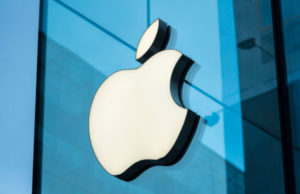The CDMA Development Group (CDG) and the Third Generation Partnership Project 2 (3GPP2) today released their proposed Ultra Mobile Broadband (UMB) standard, the technology they hope will trump the mobile iterations of IEEE 802.16e-2005 (so-called mobile WiMAX) and Long-Term Evolution (LTE) as the world’s eventual 4G standard.
The proposal now needs to undergo final standardization, which backers predict will be a rapid process. In the United States, UMB is scheduled to emerge as Telecommunications Industry Association (TIA) standard TIA-1121.
The UMB proposal is an Orthogonal Frequency Division Multiple Access (OFDMA) solution that uses «sophisticated» control and signaling mechanisms; radio resource management (RRM); adaptive reverse link (RL) interference management; and such advanced antenna techniques as Multiple Input Multiple Output (MIMO), Space Division Multiple Access (SDMA) and beamforming. It supports inter-technology handoffs and seamless operation with existing CDMA2000 1X and 1xEV-DO systems.
It claims to be able to deliver both high-capacity voice and broadband data in all environments, including fixed, pedestrian and fully mobile in excess of 300 km/hr. It supports, proponents say, as many as 1,000 simultaneous VoIP users within a single sector, using 20 megahertz of bandwidth. Average latency is 14.3 mSec over-the-air to support VoIP, push-to-talk and other delay-sensitive applications with minimal jitter.
The unveiling of the UMB proposal, an IP-based mobile broadband standard alleged to enable peak download data rates of 288 Mb/s in a 20-megahertz bandwidth, this week is clearly no accident – the timing is designed to rain on the parade at a WiMAX show taking place in Chicago, with evidence that a 4G technology potentially four times as fast as mobile WiMAX is almost market-ready. The CDG and 3GPP2 estimate initial commercial availability at the first half of 2009, and they clearly hope to convince carriers looking at 802.16 to instead wait just a little longer what the CDG fancies is a technology that will «leapfrog other wireless broadband technologies to become the leading standard adopted for next generation mobile telecommunications.»
And, of course, all the players – including UMB, LTE and the mobile WiMAX camp – are in a death match for designation as the official definition of wireless 4G technology. That definition won’t be released until the 2008/09 timeframe, in the form of the International Telecommunication Union’s (ITU) IMT-Advanced requirements. However, some folks, like those at research house In-Stat, also think initial implementations of LTE, UMB and 802.16 WiMAX may fall short of throughput and other expectations, with later enhancements or even some type of technology combination actually bringing real 4G to the table (TelecomWeb new break, Aug. 20).
But that’s not what the corporate backers of each of the technologies really wants (Qualcomm is behind UMB, which it considers a member of the CDMA 2000 family; Ericsson is touting LTE; and Intel has spent uncounted millions singing the glories of WiMAX). Each wants its technology to be «the one» – thus the faster the push to get UMB at least certified as a TIA standard before the ITU acts, the better to compete with the fact there is an IEEE designation for the foundation technology behind what is being called WiMAX (without, interestingly, the official permission of the IEEE).
«It is expected that the UMB specification will be quickly converted into an official global standard by the 3GPP2 organizational partners,» the 3GPP2 said in its statement unveiling the final UMB proposal. It also noted that those «organization partners» include the Association of Radio Industries and Businesses (ARIB) in Japan, China Communications Standards Association (CCSA), TIA in North America, the Telecommunications Technology Association (TTA) in South Korea and the Telecommunications Technology Committee (TTC) in Japan.
Fuente: TelecomWeb


















